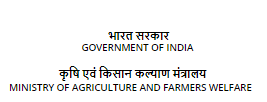CIFA M-Check for External Injuries Caused by Argulus or any Secondary Pathogens in Fish
Background:
Infectious diseases are a major bottleneck for aquaculture development. To date, there are very few proven preventive or treatment measures available against any aquaculture diseases. Secondary infections caused by opportunistic pathogens are the most common form of disease occurrence in aquaculture farms. Further, argulus-mediated external injuries are one of the major reasons for secondary infections and its associated mortality and morbidity. Repeated use of broad-spectrum chemicals and pesticides makes pathogens resistant in subsequent applications. To treat the external injury associated with argulosis and secondary bacterial infection, CIFA M-Check is developed which can effectively control various secondary bacterial infections effectively in single application during Argulus infection. In addition, Both L-Check and M-Check in combination have shown great potential for the treatment of argulosis and its associated external injury and secondary infections in wet-laboratory conditions and in farmers' fields. Three potential antimicrobial ingredients (Component A, Component B and Component C) were mixed in an optimum combination to develop the final product i.e. CIFA M-Check. The product heals the ulcerative lesions caused by argulus within three to five days very effectively. The mortality is also reduced drastically with its application:
Technology Details:
Three potential chemical ingredients (Component A, Component B and Component C) were mixed in an optimum combination to develop the final product i.e. CIFA M-Check. A single application of CIFA M-Check can effectively control argulus ulcers in fish, if it is at the initial stage of infection. It has also been noticed to heal bacterial infections or ulcers in fish and prawn. In addition, CIFA L-Check treatment should be followed by the CIFA M-Check application for the treatment of external injury and secondary infection caused by argulus. It has been tested both in wet laboratory and more than twenty farmer’s field and found to be very effective.


